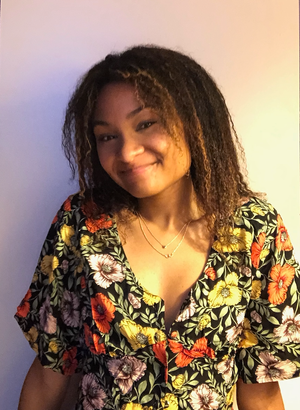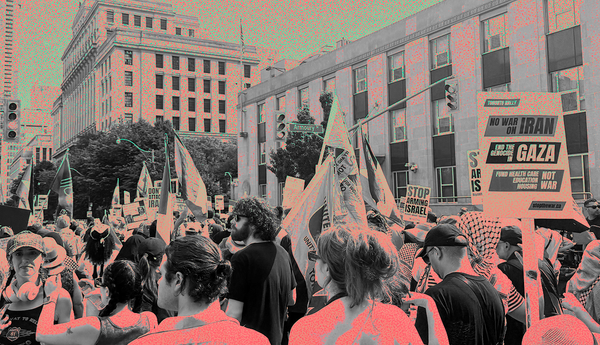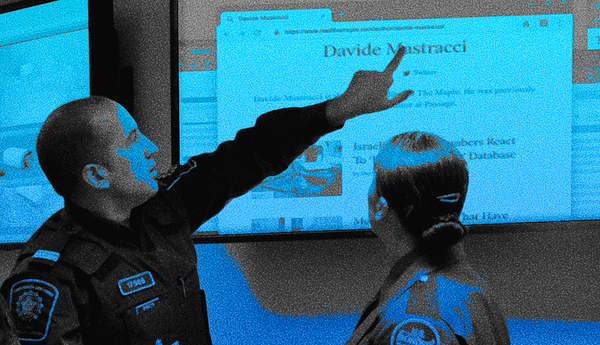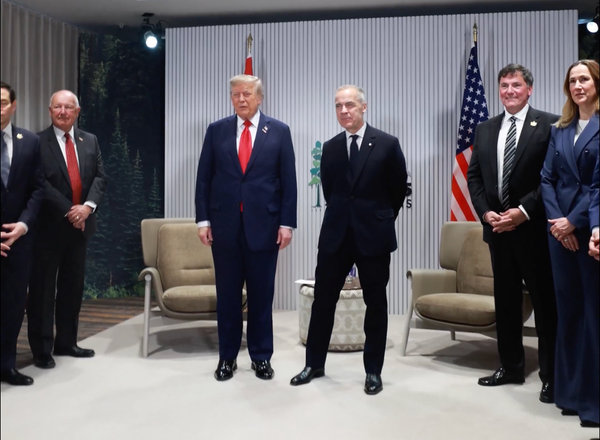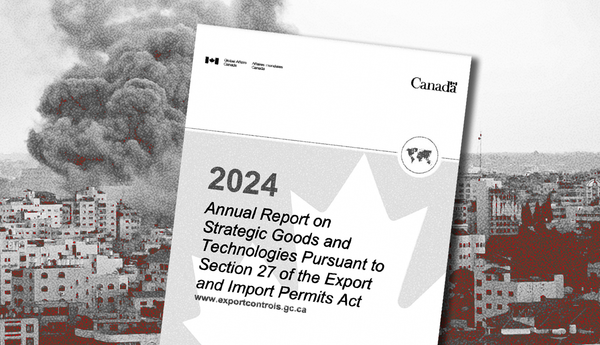Bloodcurdling screams grow more distant as police officers drag blockaders deeper into concealed “exclusion zones.” Recent boundary lines divide the valley of ancient old-growth trees into a grid of restricted spaces. Corralled groups of land defenders and media personnel remain in the dark as officers make extractions and arrests out of sight. Although unaware of the exact cause of the cries for help, many visitors have become familiar enough with the excessive force often used by officers to imagine the hidden affairs.
This has been the ongoing reality at Fairy Creek (Ada’itsx) as RCMP officers enforce a B.C. Supreme Court injunction granted to the Teal-Jones logging company against blockaders.
On duty in the area since May 17, the RCMP have made over 800 arrests. This number, increasing daily, comes eerily close to that of Clayoquot Sound’s 1993 “war in the woods,” the largest act of civil disobedience in Canadian history.
Now-outdated technology may have limited accurate and timely media coverage in the days of Clayoquot Sound, but extensive police-enforced restrictions at Fairy Creek block on-the-ground reporting.
“I can't see what's going on. All I can hear is the screams. And I can't (go) unless I'm going to risk arrest,” independent journalist and photographer Ora Cogan told The Maple.
While the RCMP-enforced injunction was not intended to prevent journalists from accessing exclusion zones, the police have done just that. Little media coverage has been able to adequately portray the severity of the RCMP’s treatment of land defenders. Roadblocks and tactics designed to push aside blockaders have at the same time obstructed media access.
Throughout the watershed, members of the media are shepherded into exclusion zones, threatened with arrest, and even detained. On days when media access is completely denied, witness accounts report increases in police misconduct and aggression.
Recently, these restrictions have forced the public to rely on firsthand accounts and footage shared on social media.
When Cogan saw video footage of the violent arrest of xw is xw čaa (also known as Kati George-Jim) at Fairy Creek, she felt compelled to document her own eyewitness accounts of RCMP and land defender interactions. For her to report on the police brutality hindering the protection of southern Vancouver Island’s last intact valley of ancient coastal temperate rainforest, she would need to see it in person.
Threats of arrest haven’t scared off Cogan and her colleagues. Instead, media restrictions make it so much more important for journalists to continue to do their jobs as best they can under the circumstances.
“I was travelling along with Jesse Winter, who was reporting for The Globe and Mail,” said Cogan. “And ended up publishing a photo of (us) being threatened with arrest for walking deeper into an exclusion zone ... And then I just kept on coming back.”
Cops Demand Non-Existent Credentials
At RCMP checkpoints, journalists have been asked for identification proving their press credentials. This comes as a shock to many, as no such formal media accreditation exists in Canada.
“What complicates the narrative is that there are folks that are not really journalists who are calling themselves journalists,” said environmental journalist and author Arno Kopecky. “Maybe they write a blog, or maybe they write a newsletter for an NGO, or something, but they are right in there with the protesters.”
Kopecky, who showed up to Fairy Creek in an everyday shirt and jeans on assignment for The Tyee, had an officer question whether he was part of the blockades: “I had a tent in (my car) because I didn't know where I was going to sleep. He was wondering if I was a protester.”
RCMP officers demanding non-existent media credentials have been more likely to treat reporters from independent outlets with hesitancy and suspicion, taking preventative measures to obstruct potential blockaders.
For freelancers and those lacking the clout and easy identification that comes with impressive camera equipment and logo-labelled vehicles, RCMP restrictions have made accessing the blockades especially difficult.
“As far as I know, that's not the RCMP’s job,” explained Cogan. “They've been told that they can't take preventative measures (and) do preventative arrests, and I've seen them do that over again.”
“I don't see police going into family homes sitting around for days on end waiting for domestic violence to take place,” Cogan added.
Kopecky faced little to no trouble during his visit to Fairy Creek in late May. A saved email from his editor was enough to prove his role as a journalist. He was escorted, alongside a CTV cameraperson, to an exclusion zone by an officer. On the other hand, Cogan, who has covered Fairy Creek for Ricochet and Teen Vogue, has faced much worse.
“The cumulative experience (of being suspected as a part of the blockades) is really frustrating,” Cogan explained. “I feel like I'm being met with this overblown suspicion that somehow I'm part of the protests. Like, have you ever seen me jump into a hard blockade? Have you ever seen me in a dragon? No. I’m usually with a camera in hand and a little audio recorder, doing my job all the time.”
“We're not going to interfere with their job. But continuously I feel like they're interfering with mine,” Cogan added.
Police Obstruction Continues Despite Court Ruling
The treatment of the media in Fairy Creek has not gone without notice. In May 2020, police obstructions of the media prompted a coalition of news organizations to pursue legal action after attention was drawn to numerous accounts of journalists being refused entry.
Capital Daily’s managing editor Jimmy Thomson’s thwarted attempt to observe the enforcement of the Fairy Creek injunction stands as a key example of the RCMP’s early injunction-enforcing treatment of journalists.
The Canadian Association of Journalists (CAJ), along with Ricochet, The Narwhal, Capital Daily, Canada’s National Observer, The Aboriginal Peoples Television Network (APTN), Canadian Journalists for Free Expression (CJFE), The Discourse and IndigiNews, filed a complaint requesting that the media be provided with fair access, and calling on courts to limit RCMP power when granting injunctions.
But while press freedom advocacy groups applauded Justice Douglas Thompson’s July 20 BC Supreme Court ruling in favour of media access to the Fairy Creek blockades and court injunctions, RCMP restrictions on the media have continued to obstruct the site.
Journalists have since had access by vehicle denied and are often forced out of the sightline of extractions and arrests. Cogan recounts her ability to adequately report being compromised due to complications with RCMP Media Relations Officers (MROs).
“Sometimes they’ll have one or two MROs on site for this whole area, and they’re just not present in very critical moments,” said Cogan. “And I’m repetitively told by officers that I need to speak to the MRO when he arrives, but that he’s not there.”
At times, journalists are allowed into exclusion zones under supervision, if they have any luck in finding one of few MRO escorts. On other occasions, MROs and other RCMP officers disagree on seemingly arbitrary media allowances, often ending with journalists being threatened with arrest for stepping into restricted zones.
When the MRO system works, it works. But the chances of successful interactions with MROs are slim, and discriminatory.
“To be fair, sometimes the MRO is there, and we get really great access or, you know, in certain moments get really good access. But then, it's just really what I think it should be.” said Cogan. “When they're in control of this area, my access hinges on a good faith relationship with officers to be able to gain access … Myself and others have over and over proven that we're not getting in their way.”
Both Kopecky and Cogan have said that race plays a role in the RCMP’s treatment of reporters.
“I've seen racial profiling over and over again with my colleagues,” said Cogan. “If we're with other media people or members of the press, we're treated better because I'm white. Or I'm asked for my press credentials last. I haven't been arrested or singled out for arrest as much as I’ve seen (happen to) media makers who are people of colour.”
The Maple reached out to Neil Aaron Bourne from Independent Black Media and Emilee Gilpin from IndigiNews to comment further on the treatment of people of colour at Fairy Creek. Neither were available to respond before publication.
‘You Are To Be Silent.’
In August, a video Cogan posted on Twitter of her speaking to an officer was widely shared as it sparked concerns about press freedom and police conduct.
In the video, Cogan explains that the MRO is not present and that she is reporting on the situation on assignment for Teen Vogue. The video then shows an officer responding to Cogan with: “You’ve already been told the rules. You are to be silent while doing your job, or you’re gone. You are not to talk to us or engage with us. You are to be independent and quiet.”
The RCMP and a legal observer have since critiqued the video, stating that understanding the situation requires further context.
“For the record, I know (RCMP MRO) Chris Manseau insinuated that it's possible that I was yelling at an officer for two hours beforehand. That was not the case,” clarified Cogan, who said she was corralled while walking down to the margin of an exclusion zone as an extraction was occurring below.
“I was asking pretty calmly, in a calm moment, an officer who was pushing the line why our access was being limited at that moment (and) what his orders were regarding media in the exclusion zone.”
Since that interaction, Cogan said she has been physically violated by officers twice.
“I’ve had officers put hands on me on two instances where I was on the side of the road, doing my job out of (their) way, and documenting the officers pushing the line and grabbing people and making arrests,” said Cogan.
While Cogan was taking photographs at the side of the road, an officer asked her to move back, physically forcing her backwards. Cogan, scared and under the assumption that the officer was going to arrest her, said she then yelled to be let go.
In another instance, when a subject known to Cogan from previous stories was being brutalized by the police, Cogan let out a scream of terror.
“(An) Afro-Indigenous five-foot tall woman with a neurological disorder, who some of those officers know intermittently uses a wheelchair and walks with canes — she was also ripped out (of the corral of blockaders) … dog piled,” said Cogan. “Her arm was bent way back. All sorts of tactics that seemed to me to be really heavy-handed. That's when I screamed.”
“Maybe it’s not professional as a journalist to scream in terror when they see something awful happening,” Cogan added. “But I’m also a human.”
In Need Of ‘Bravery To Speak Some Truth’
Kopecky criticized police officers for not being impartial. Cogan said she has spoken to members of the media who have had officers tamper with their film equipment as well as Indigenous land defenders who have had their body cameras cut off of them. Limited footage makes its way out of Fairy Creek to tell the tales of police misconduct.
“There’s nothing particularly radical or necessarily even on-side with blockaders about holding authority figures to account,” said Cogan. “That’s even a conservative tenant of journalism.”
Cogan told The Maple of a violent, discriminatory RCMP attack against a Black land defender.
“There was this Black land defender that I feel was completely singled out in a group,” said Cogan. “Pulled out of that group of blockaders and thrown on the ground. Handcuffed when everybody else that was arrested in that moment was zip-tied. And then, after that person was handcuffed, they were dragged on the ground, I think choked out, had their ankles tied together, zip-tied, had their dreads pulled. It was awful to watch.”
While emphasizing being mindful of trauma-porn and getting consent from story subjects, Cogan urges independent journalists to hold authority figures accountable and ensure that these stories get the coverage they deserve.
“There hasn't been a lot of legacy media (at Fairy Creek), for whatever reason, whether it's financial or who knows what,” said Cogan. “I think in order to actually report on a story, to be able to get to know people, to be able to build trust, reporters would need to go out and do what I've done, and others have done, which is embed in the camps, or spend some time getting to understand more of the context of these stories. I don't see that being done.”
Although the Fairy Creek blockades have been in the news throughout the past year, with coverage discussing issues of Indigenous sovereignty, climate justice and efforts to protect the biodiversity of the watershed, stories of police brutality have only recently been in the limelight.
“It has only seemed to get a really good amount of attention lately,” said Cogan. “And in my mind, I feel like that's because there were white people that were pepper-sprayed. Where was everybody two months ago? Or one month ago?”
Jasmyne Eastmond is a freelance writer currently based in Toronto. She received her BSc in Biology and English Literature from UBC and her MPhil in English (Criticism and Culture) from the University of Cambridge.

